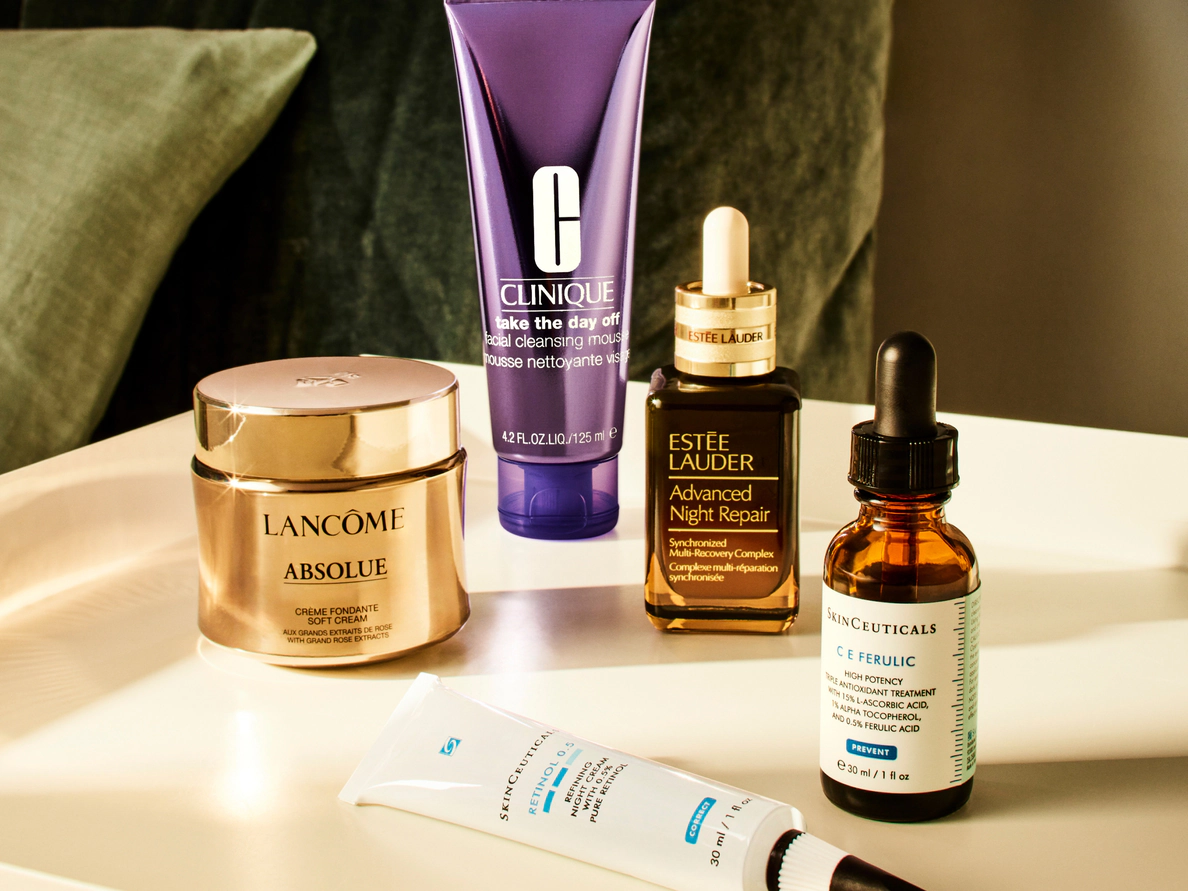Your Everyday Skincare Routine For Dry Skin
We understand that managing your dry skin can be tricky, especially in Australia’s extreme climate. But there’s plenty you can do to keep it hydrated and looking radiant. The key is knowledge.
By knowing your unique skin, you’re in a much better position to navigate its challenges and select the right gentle skincare products for you. The upshot? Smoother, softer, healthier skin that you feel ready to embrace all life’s moments in.
Explore our skincare guide for dry skin, backed by Dermatologist Dr Cara McDonald, plus tips on how to keep your skin hydrated around the clock.
Step 1: Cleanse
The best facial cleanser for dry skin is one that’s gentle and hydrating. Products that contain ceramides, hyaluronic acid, or glycerine will help to gently remove dirt and oil while hydrating and soothing dry skin. Although it is important to avoid over-cleansing dry skin, a good-quality gentle cleanser will remove impurities and products from the skin while helping to protect and hydrate the skin barrier.
How to apply cleansers to dry skin:
Step 1: Wet face with warm water
Step 2: Massage a 10c coin-sized amount into the face and neck in a circular motion
Step 3: Rinse with cool water
Step 4: Pat skin dry to prep for the next step
Cleanse once a day in the evening for super dry skin or twice daily with a gentle product.
Step 2: Use Alcohol-Free Toner
A toner specifically formulated for dry skin will help restore your skin’s pH balance, lock in moisture and prep your skin to absorb the goodness of the rest of your dry skincare routine. Look for alcohol-free toners that contain soothing ingredients like glycerine and hyaluronic acid, as these are great for boosting hydration.
How to apply toner to dry skin:
Step 1: Apply a small amount of toner to a cotton ball or pad
Step 2: Rub gently over the face using an upward motion
Step 3: Leave for a minute or two to dry for maximum efficacy before applying the next product
Apply once in the evening after cleansing for super dry skin, otherwise, twice daily.
Step 3: Apply Serum
Think of a hydrating serum as an oil for dry skin. It’s an ultra-hydrating skincare step that prevents drying and improves moisture retention to promote a soft and smooth look. Be sure to choose a dry skin serum containing hydrating ingredients like hyaluronic acid, vitamin E and niacinamide, as these can help replenish moisture and nutrients your skin may have lost.
How to apply serum to dry skin:
Step 1: Mist or dampen the face first for maximum efficacy
Step 2: Apply 3-4 drops and gently massage using small tapping or rubbing motions until absorbed
Apply sparingly at first and increase if tolerated. Use morning and/or night according to product information.
Step 4: Moisturise
Hydrating your skin with a nourishing moisturiser is one of the most important steps for this type of skin. Look for face moisturisers for dry skin with rich hydrating and fortifying ingredients like hyaluronic acid, ceramides and glycerine, and B vitamins like niacinamide. These act gently on the skin to promote a softer, smoother complexion. Stay away from fragrances, alcohol, glycolic acid, and salicylic acid as these can penetrate the skin barrier causing further drying.
How to apply moisturiser to dry skin:
Step 1: Dot product on forehead, nose, cheeks, chin, and neck with fingertips
Step 2: Gently rub into the skin using an upward motion
Step 3: Leave to dry before applying SPF or makeup
Apply morning and night.
Step 5: Finish With SPF
While protecting any skin type in Australia’s sun-soaked climate is vital, shielding dry skin from harmful rays is key to retaining natural oils the sun can strip. Look for ingredients like hyaluronic acid, glycerine, jojoba oil, ceramides, and aloe vera, as these will soothe and hydrate the skin at the same time. Remember, the higher the SPF, the higher the protection – so go for at least factor 30.
How to apply SPF to dry skin:
Step 1: Dot SPF on forehead, nose, cheeks, chin, and neck with fingertips
Step 2: Rub gently into the skin to achieve even coverage
Apply daily in the morning after moisturiser and before makeup - even in the winter. Reapply every 2 hours if outdoors.
Dry Skin 101
A little knowledge can go a long way when it comes to caring for dry skin. Scroll on to learn more about this skin type and caring for it all year round.
Dry Skin Defined - So, what exactly is dry skin, and how does it come about? It happens when the outer layer of the skin loses water too quickly. This can result in rough, flaky, or scaly-looking skin that can feel tight, itchy, and sometimes even painful.
Signs Of Dry Skin - The appearance of dry skin can vary for different people and can change with the season or due to environmental and other factors. But in general, dry skin on the face has a rough, flaky texture due to the tiny cracks that develop on the skin’s outer layer. It can appear white, red, grey, or brown and can sometimes cause bleeding.
Causes Of Dry Skin - There are all sorts of reasons skin can become dehydrated. For example, genetics can play a role in the skin’s ability to retain moisture. As can cold, dry climates or exposure to environmental chemicals like pollution. Too much sun exposure, harsh skincare products or excessive washing - especially in hot water - can also strip natural oils from the skin, causing drying.
Dry Skin Tips
Managing dry skin can be tricky, but there are simple things you can do at home to boost your skin's hydration and ability to retain moisture.
Use Gentle Products - Dry skin loves gentle products. Why? Because they feed your skin without stripping natural oils. When choosing dry skin products, look for fragrance-free and alcohol-free items containing gentle ingredients like ceramides, hyaluronic acid, glycerine and B vitamins like niacinamide. These will nourish your skin while boosting your skin’s moisture levels.
Shower With Warm Water - While a steaming hot shower can be tempting – especially in the depths of winter – warm water on dry skin is a much better option. It helps to cleanse and soothe without stripping the skin’s natural oils or causing further dehydration. So, next time you take a shower or wash your face in the sink, try lowering the water temperature to lukewarm.
Humidity Is Your Friend - A little humidity can be a lifesaver for dry skin. When moisture is in the air, it can help replenish the moisture in the skin, keeping it hydrated and healthy. This is especially true during colder months when the air is drier than a desert. But since we can’t always control humidity levels, a facial mist can be a great way to combat the effects of dry air.
Skincare Routines For Every Skin Type
Our skin changes all the time, especially in Australia’s unique climate. So, we’ve created guides for each skin type to help you crack your skin code and prepare for all life’s moments.







